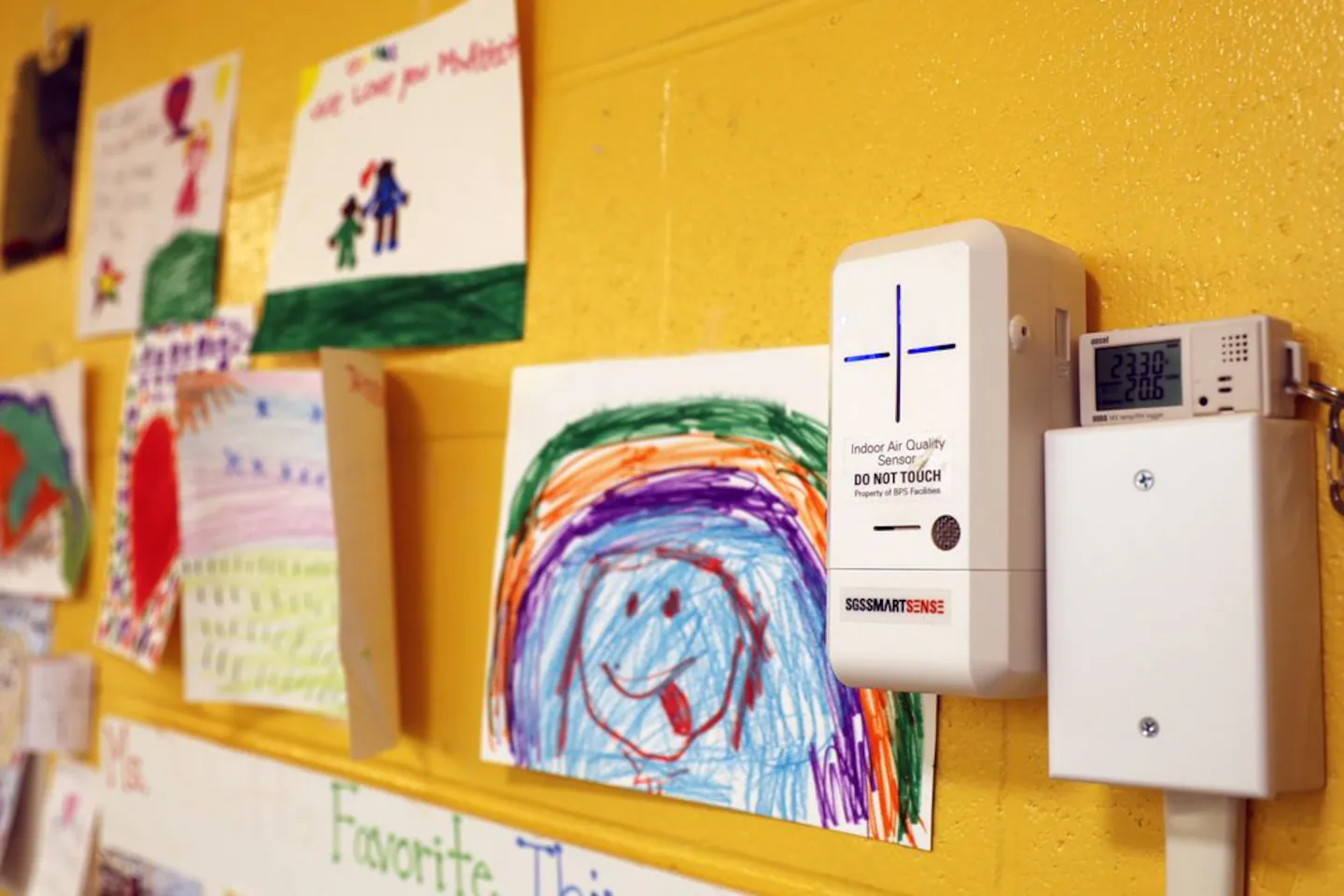Copyright The Boston Globe

Boston Public Schools went a step further, installing the sensors and partnering with researchers at Boston University to analyze the results. With new support from a city grant, the district is developing an action plan to guide how the data is used in schools to bring in cleaner air. “They’ve set a model for how it should be done going forward,” said Joseph Allen, director of the Healthy Buildings program at Harvard T.H. Chan School of Public Health. Indoor air is less regulated than outdoor air, even though most people spend the vast majority of their time indoors, and the concentration of some pollutants can also be several times higher than outdoors. Contaminants such as vehicle exhaust and wildfire smoke — made increasingly common in New England by fires in Canada and the West that are exacerbated by climate change — can seep into buildings. Pollutants can also originate inside, such as dust and volatile organic compounds emitted by cleaning products. Aging infrastructure is especially vulnerable. In Boston Public Schools, the oldest public school system in the country, a quarter of the buildings are over a century old. About a third have central HVAC systems. The sensors give the district the ability to pinpoint air quality issues and, more importantly, fix them. They have helped spur actions to improve ventilation systems, curb activities that worsen indoor air, and support policies that reduce pollution. Research backs up Boston’s approach. Allen, the Harvard professor, contributed to a report on how school buildings impact student success that reviewed more than 200 studies. He said researchers have found a clear relationship between better indoor air and lower rates of viral transmission. Indoor air is also associated with better reading and math test scores. And there are studies linking high pollution to anxiety and depression. “We’re talking about fundamental human physiology here,” he said. A study in Connecticut found that addressing air quality problems reduced absenteeism in a school district by more than 50 percent. Another paper observed a drop in student attention in poorly ventilated classrooms that was roughly equivalent to the effect of skipping breakfast. The Boston sensors also measure temperature, and a study in New York found that for every 1 degree Fahrenheit increase in exam room temperatures, average student test scores fell by 0.2 percent. Boston Public Schools got to work installing the sensors in 2021 after receiving about $7 million in federal COVID relief funds for the program. More than 4,000 devices were placed in classrooms, main offices, and nurses’ offices, and on rooftops. Every classroom in the district, which encompasses more than 100 schools, is outfitted with a sensor. The sensors measure six parameters: temperature, humidity, carbon dioxide, carbon monoxide, fine particulate matter, and coarse particulate matter. Parents can track the measurements in individual classrooms through a real-time dashboard online. Katherine Walsh, who leads the program for BPS, said the district has staff monitoring the data and identifying opportunities to respond. The data has guided decisions on school closures during heat waves, prompted repairs of faulty HVAC components that were raising carbon monoxide levels in classrooms, and supported enforcement of policies to eliminate vehicle idling near schools, among other interventions. “It’s one of the best investments Boston Public Schools has ever made,” Walsh said. “It has just paid for itself already over and over again.” There are limits, however, to what can be done to fix problems identified by the data. Classrooms that are too hot or too cold have drawn particular attention. During a brutal heat wave at the start of the 2023 school year, a handful of classrooms recorded temperatures that exceeded 90 degrees. The district said schools without air conditioning were making sure to have ample fans on hand and were opening windows in the mornings and evenings to let in cooler air. Walsh said other districts have reached out for advice on establishing their own programs, and some have gone on to follow Boston Public Schools’ example, including Denver Public Schools and Montgomery County Public Schools in Maryland. The data from the sensors are also sent to Patricia Fabian, an environmental health associate professor at Boston University. She works with a team of interdisciplinary researchers, including data scientists, statisticians, and building science specialists, to make sense of the measurements. Right now, they’re developing an algorithm to detect air pollution events in real time and plan to eventually connect the sensor data to student outcomes. During school breaks, the researchers go into schools and do field experiments, such as measuring ventilation rates by using dry ice and incense to raise carbon dioxide and fine particulate matter concentrations. “Billions of data points are generated every year,” Fabian said. “There’s a lot of work that needs to be done.” The sensor network project recently received a boost from the City of Boston, which awarded it nearly $200,000 through its Community Clean Air Grant program to develop an air pollution action plan. Tori Hass-Mitchell, the city’s air quality project manager, said the initiative had the potential to reach “the greatest number of people of any of the projects.” Lindsey Burghardt, the chief science officer at Harvard’s Center on the Developing Child, acknowledged that it can be difficult to believe indoor air can have far-reaching impacts. She has studied how polluted indoor air negatively affects children’s development, including their brains, lungs, and immune systems. She compared sitting in a classroom with high carbon dioxide levels to feeling drowsy on a long car ride. That sleepiness, she said, is partly due to CO2 building up inside the car. Just as rolling down a window to improve ventilation can boost your alertness and ability to drive safely, better classroom air can improve students’ learning, she said. “We all know how we feel when we’re inside a hot, stuffy, or poorly-ventilated room without a lot of windows or without fresh air,” she said. A study from Fabian’s team using data from the 2022-23 school year found the highest concentrations of carbon dioxide in classrooms exceeded 5,000 parts per million. Studies have shown that concentrations of 1,000 parts per million can impair decision-making. Principal Harry Gilliam of the Richard J. Murphy K-8 School in Dorchester said parents had questions when the sensors first went in: Why is it wired into the wall? What do the lights mean? Now, he said, the sensors are no more or less notable than the light switches. Coming from a family of HVAC engineers, Gilliam said he was excited to have the sensors. They give him peace of mind, especially for his students with special health needs. “It means another level of protection inside the building, identifying some of the things that we can’t see and we can’t smell,” he said.



